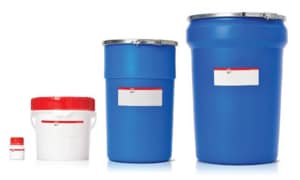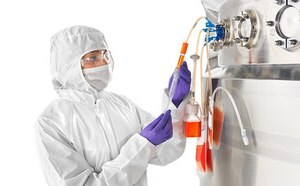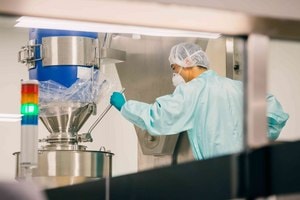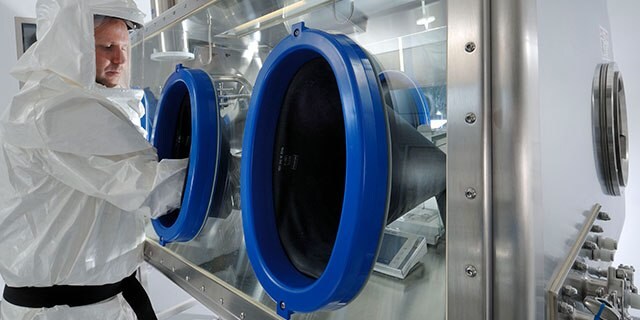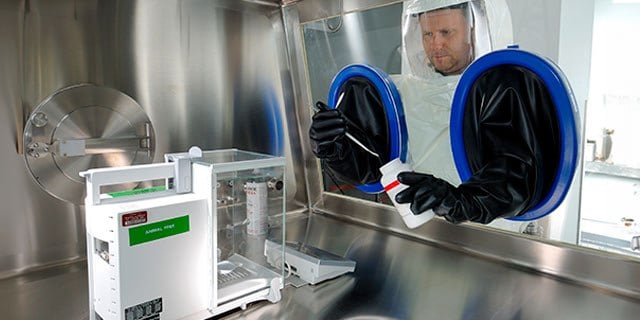ADC Manufacturing: Conjugation

A key step in antibody-drug conjugate (ADC) production is the conjugation of a highly potent active pharmaceutical ingredient to a monoclonal antibody (mAb) using a linker. When conjugated to a targeting antibody, cytotoxic HPAPIs exhibit more selective therapeutic benefits and improved safety profiles.
The linker reacts with accessible lysine or cysteine residues on the surface of the mAb and can result in ADC heterogeneity. Second generation ADCs use engineered mAbs, designed for more uniform linker binding, which reduces variability and increases ADC homogeneity.
Switching to single-use technologies enhances the efficiency and scalability of the conjugation step, offering greater process flexibility and reducing cross-contamination risks. However, it’s crucial to ensure chemical compatibility with the organic solvents used in ADC conjugation.
The Mobius® ADC Reactor is designed to meet these needs while ensuring product quality and operator safety. Experience its benefits—click here to request a technical consultation.
Featured Categories
Our complete range of Mobius® single-use mixing solutions can meet your needs for mixing pharmaceutical ingredients from intermediate to final drug products, as well as preparation of process solutions such as buffers and media.
Our broad portfolio of buffer materials manufactured according to GMP guidelines includes excipients specifically for drug formulation and manufacturing, including high-risk applications. Whether your product is a small or large molecule drug, we offer high-quality buffers and pH adjusters with regulatory support.
A closed sterile sampling method is increasingly preferred by regulatory authorities over traditional sampling methods, such as glass bottles or steam-in-place (SIP) stainless steel valves. The NovaSeptum® GO sterile sampling system is designed to provide you with the flexibility and safety you need when sampling at any point in your aseptic or sterile biomanufacturing process.
Downstream and formulation chemicals ensure the yield and safety of your drug product throughout the downstream process. Supporting high-risk applications, our chemicals are multi-compendial and manufactured according to GMP guidelines.
Development
Initial development of ADC candidates includes the following elements:
- The antibody, which can be a mAb, a bispecific antibody (BsAb), an antigen binding fragment (Fab), or another format.
- A variety of linkers to help maintain stability of the ADC, offer the desired release kinetics, and prevent payload loss, following administration to the patient.
- Different classes of payload that could include small molecules, protein toxins, biologically active peptides, enzymes, and radionuclides.
- Multiple ADC solubilizers, needed to achieve a high drug-antibody ratio (DAR), a wider therapeutic index, and improved drug efficacy.
An efficient conjugation step and generation of multiple ADC candidates is essential to meet development timelines and identify the preferred options for advancing into preclinical and clinical development.
From the earliest stages of development, ADC production should be designed with scalability in mind. Choosing appropriate technologies and equipment that enable easy scaling from bench to large scale will facilitate the transition to clinical- and commercial-scale GMP production. Similarly, containment should be primary focus from the start, as the highly cytotoxic HPAPIs need to be contained to protect operators and the production environment from potential contamination.
Manufacturing
Throughout ADC development and manufacturing, single-use technologies can be used to enhance process flexibility and eliminate the risk of cross-contamination. However, before implementation, it is crucial to confirm that any single-use technology is chemically compatible with the organic solvents used in ADC conjugation. The risk to the ADC from extractables and leachables (E&L) must be considered as they can alter safety, identity, strength, quality, and purity of the drug product. A data-driven, risk-based approach is recommended to support E&L risk assessment efforts and regulatory compliance.
Additional considerations during ADC manufacturing and large-scale conjugation include:
- Ensure robust supply and reliable lead times for raw materials, including the mAb and linker-payload to maintain business continuity and preventing process disruptions.
- Increase the likelihood of successful conjugation by using strong, leak proof containers.
- Improve conjugation efficiency and process robustness through consistent mixing, monitoring and control of key process parameters including temperature and pH.
- Consider ergonomics in containment strategy and equipment selection to enable precise and safe addition of reagents while minimizing drip formation that could compromise the mAb and ADC quality.
Explore our solutions designed to address the challenges of ADC conjugation throughout development and manufacturing:
- High-quality chemicals, essential raw materials and excipients for manufacturing and formulation such as buffers, pH adjusters, solvents, surfactants, and stabilizers. More than 350 chemicals are supported by extensive documentation through our Emprove® Program, accelerating your risk assessment.
- Single-use technologies including Mobius® ADC Reactor and single-use equipment and consumables for TFF, chromatography and aseptic processing to meet different downstream demands in both small- and large-scale processes.
- Real-time monitoring and control solutions, sampling systems, and advanced automation and analytics software, which take process control to a new level.
- Comprehensive contract manufacturing services for mAbs, payloads, linkers, linker-payload intermediates, bioconjugation, and ADC product characterization to accelerate development and manufacturing timelines.
Visit our document search for data sheets, certificates and technical documentation.
Related Articles
- Take advantage of strength and leak prevention in containers made from Ultimus® film. Leak free transportation in single-use bioprocessing bags.
- It is important to evaluate the compatibility of the single-use components of an equipment dedicated to conjugation such as the Mobius® ADC reactor.
- ADC payload intermediates such as, DOLCore ™, MAYCore ™, and PBDCore ™, simplify payload synthesis for the most commonly used payloads: maytansine, dolastatin, and PBD dimers.
- See the data on how the chito-oligosaccharide ChetoSensar™ overcomes ADC solubility challenges.
- ADC production relies on conjugation to link the cytotoxic payload to the mAb. Explore the benefits of a single-use reactor for efficient conjugation.
- See All (5)
Find More Articles and Protocols
How Can We Help
In case of any questions, please submit a customer support request
or talk to our customer service team:
Email custserv@sial.com
or call +1 (800) 244-1173
Additional Support
- Chromatogram Search
Use the Chromatogram Search to identify unknown compounds in your sample.
- Calculators & Apps
Web Toolbox - science research tools and resources for analytical chemistry, life science, chemical synthesis and materials science.
- Customer Support Request
Customer support including help with orders, products, accounts, and website technical issues.
- FAQ
Explore our Frequently Asked Questions for answers to commonly asked questions about our products and services.
To continue reading please sign in or create an account.
Don't Have An Account?
